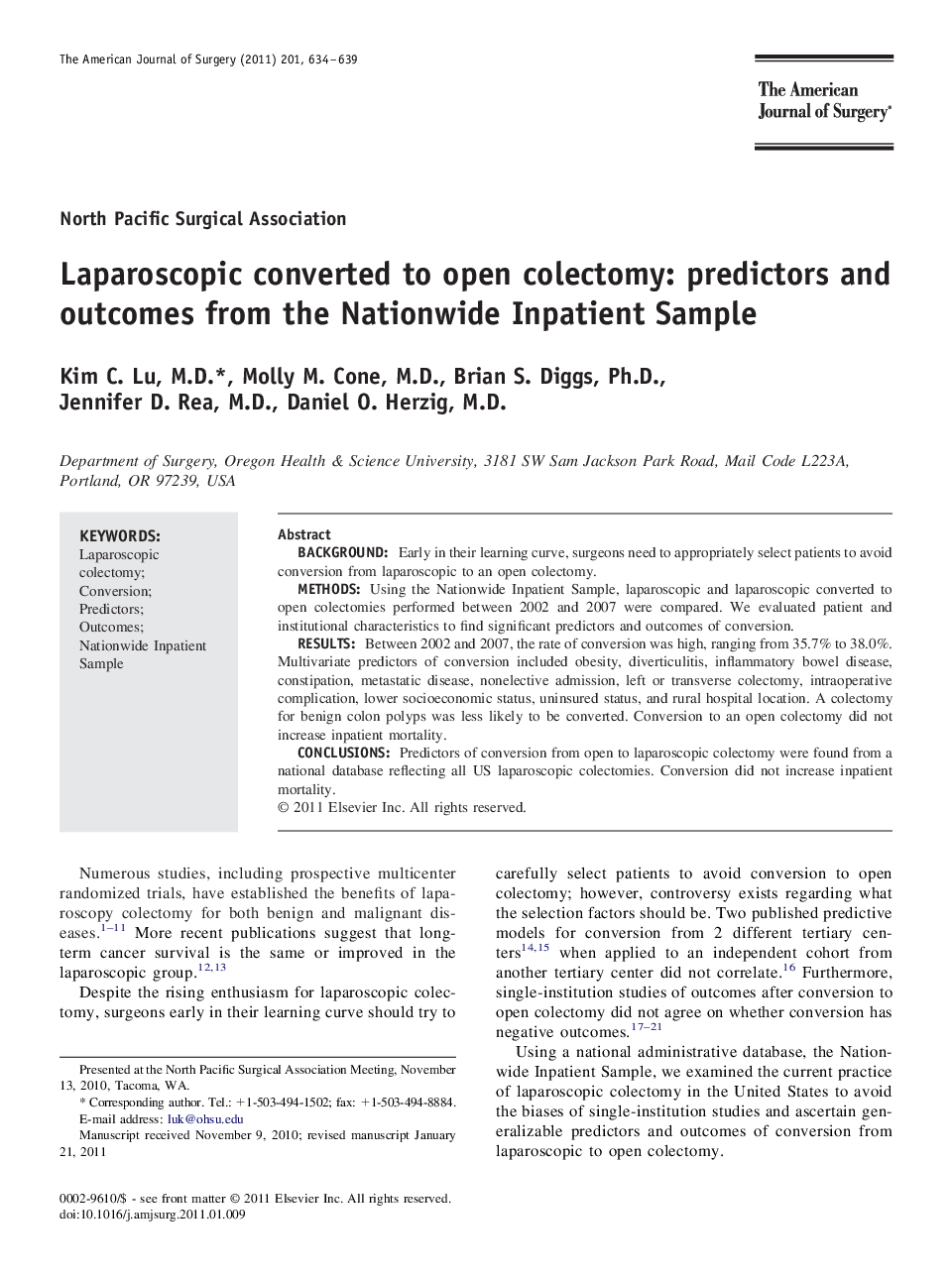| Article ID | Journal | Published Year | Pages | File Type |
|---|---|---|---|---|
| 4280087 | The American Journal of Surgery | 2011 | 6 Pages |
BackgroundEarly in their learning curve, surgeons need to appropriately select patients to avoid conversion from laparoscopic to an open colectomy.MethodsUsing the Nationwide Inpatient Sample, laparoscopic and laparoscopic converted to open colectomies performed between 2002 and 2007 were compared. We evaluated patient and institutional characteristics to find significant predictors and outcomes of conversion.ResultsBetween 2002 and 2007, the rate of conversion was high, ranging from 35.7% to 38.0%. Multivariate predictors of conversion included obesity, diverticulitis, inflammatory bowel disease, constipation, metastatic disease, nonelective admission, left or transverse colectomy, intraoperative complication, lower socioeconomic status, uninsured status, and rural hospital location. A colectomy for benign colon polyps was less likely to be converted. Conversion to an open colectomy did not increase inpatient mortality.ConclusionsPredictors of conversion from open to laparoscopic colectomy were found from a national database reflecting all US laparoscopic colectomies. Conversion did not increase inpatient mortality.
